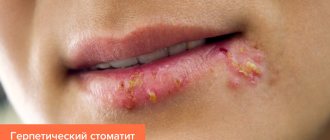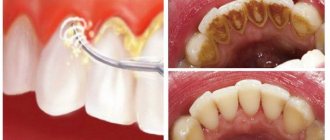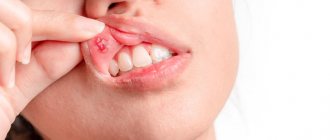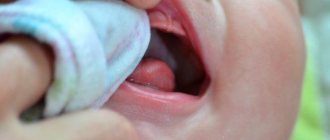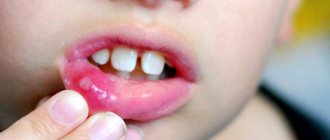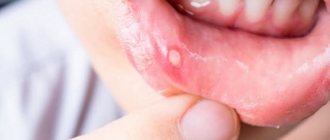Stomatitis is one of the most common dental diseases, which is expressed in damage to the oral mucosa. It occurs in both adults and children and requires urgent treatment. Treatment of stomatitis in children is usually required for children with weakened immune systems. There are many ways for infection to enter a small organism.
Urgently contact the dental department of the CELT clinic if your child exhibits the following symptoms:
- increased temperature;
- no appetite;
- a white coating appears on the gums;
- ulcers appeared in the mouth;
- lymph nodes hurt.
We have everything to carry out effective, prompt and painless treatment of stomatitis in children of any age. Bring to us children under one year old, 2-3 years old and older - and we will select effective treatment for him in each individual case.
Consultation with a pediatric dentist (pedodontist) - RUB 1,000.
Apexification with the application of a temporary filling (1 channel) - 1,500 rubles.
Filling the root canals of baby teeth - 4,000 rubles.
Installation of insulating gasket "VITRIBOND" - 800 rubles.
At CELT you can get advice from a dental specialist.
- Cost of consultation with a pediatric dentist (pedodontist) – 1,000
Make an appointment
Causes and types of stomatitis
Treatment of stomatitis in young children is carried out by treating the affected areas with special medicinal compounds, the choice of which is carried out in accordance with the etiology of the disease. Treatment is prescribed by the pediatric dentist after examining the small patient and identifying the cause and nature of the disease.
The disease can develop due to bacteria entering the mouth through dirty hands or cutlery, as well as due to a weakened immune system. The spread of pathogenic bacteria in a child’s body occurs at extreme speed due to the vulnerable mucous membrane. An additional factor is weak salivation, which causes a lack of hydration. Excessive dryness leads to cracks into which bacteria penetrate and cause disease.
Stomatitis often develops while taking pharmacological drugs. To avoid progression of the disease, you need to stop taking antibiotics. During the consultation, the decisive factor is the observations of the parents. They are the ones who can explain the cause of the disease (injury to the mucous membrane, allergies, taking antibiotics).
Should I turn to homeopathy?
Today, more and more patients are turning to homeopathy for stomatitis treatment. This is due to the fact that homeopathy remedies do not have serious side effects like individual medications. They contain small doses of active ingredients, which prevents them from accumulating in the human body. Very often, modern parents resort to homeopathy to treat their children, since the risk of various side effects is minimal.
Aphthous stomatitis
Aphthous stomatitis is characterized by the appearance of a large number of aphthous stomatitis on the oral mucosa. These are round or oval ulcers covered with plaque. The causes of this disease are as follows:
- past infectious diseases: influenza, measles;
- lack of vitamin B12 and microelements in the body;
- oral injuries;
- gastrointestinal diseases.
For the most effective treatment of aphthous stomatitis in children, our specialists pay special attention to identifying the cause that caused it. Treatment of acute stomatitis in children is simply necessary, since the disease itself is very difficult. Its characteristic feature is unpleasant pain symptoms, which intensify when the ulcers are touched with hot or sweet food.
Treatment of purulent stomatitis in children requires an integrated approach. It consists not only in local treatment of ulcers with medications, but also in proper diet, frequent drinking and regular oral hygiene.
Viral stomatitis
The name of viral stomatitis speaks for itself: it is caused by influenza, herpes, measles and chickenpox viruses.
Symptoms of the disease at an early stage include weakness, lethargy, a slight increase in body temperature, and pain in the mouth. When examining the oral cavity, you can see the appearance of small red ulcers on the mucous membrane and tongue. Treatment of viral stomatitis in children depends on the age of the child, the state of his immunity and the stage of the disease. As a rule, our experts recommend treating the oral mucosa with anti-inflammatory drugs and decoctions, and lubricating the affected areas with vitamin A.
Advantages and disadvantages
Like any other method, therapy using homeopathy has its pros and cons.
Since stomatitis is a rather complex disease, in advanced cases it should be treated not only with homeopathic medicines. Severe discomfort and pain can only be eliminated with the help of special medicine.
Homeopathy strengthens the body's defenses and prevents recurrence of the disease.
The best types of stomatitis that can be treated with homeopathy are aphthous and candidal stomatitis. Homeopathic remedies work to eliminate the external signs of the disease, as well as its general manifestations.
What homeopathic remedies are used to treat stomatitis?
There are several basic homeopathic remedies that are effective for stomatitis.
- Borax, where the basic substance is sodium borate. The action of the medicine is aimed at accelerating the healing process of wounds and erosions. The drug helps with voluntary drooling and distorted taste perception. It heals wounds on the cheeks and larynx very well.
- Kalium bichromicum. It is prescribed for severe inflammation of the mucous membrane and deep aphthae.
- Kalium muriaticum heals ulcers very well and also has a positive effect on the mucous membrane.
- Arsenicum is prescribed to patients with small aphthae that cause severe pain and discomfort.
Candidal stomatitis
Candidal stomatitis is known as thrush. It can appear in children even in infancy, and it is caused by saprophytic fungi, which become pathogenic when immunity decreases. With this type of stomatitis, white spots appear in the child’s mouth. In addition, there may be an occasional increase in temperature and the appearance of photophobia. Infection of a child can occur through contaminated dishes, toys or pacifiers.
Treatment of candidal stomatitis involves undergoing daily procedures in the dental office, rinsing the mouth with alkaline solutions, and taking vitamins.
Treatment of stomatitis in a child cannot be delayed, otherwise this may lead to relapse of the disease. CELT pediatric dentists recommend regular preventive examinations that will help prevent the development of serious dental diseases, including stomatitis!
Kinds
Today, 8 types of stomatitis can be diagnosed:
- bacterial;
- aphthous - manifests itself when immunity decreases due to gastrointestinal diseases and anemia;
- herpetic – occurs due to the herpes virus;
- viral;
- angular;
- allergic – a reaction to an allergen entering the child’s body;
- traumatic - the cause may be an accidental bite of the lip with teeth or scratches on the gum;
- fungal – infection of the oral cavity by fungi of the genus Candida.
All types of stomatitis can occur in childhood. However, from birth to 3 years, children are especially susceptible to aphthous, candidal, herpetic and allergic types. During the period of active growth of baby teeth, traumatic stomatitis often appears, caused by rupture of the soft tissue of the gums.
Note! Stomatitis does not always occur on its own. Quite often, rashes in the mouth are a sign of other diseases, so before treatment it is necessary to carry out a series of diagnostic measures to discover the exact cause.
Symptoms
The classic clinical picture for diagnosing stomatitis includes the following symptoms:
- swelling of the mucous membrane;
- the appearance of a white or yellowish coating;
- bad breath;
- dryness or excessive salivation;
- enlarged lymph nodes and increased temperature.
Stomatitis in children has similar and different symptoms. Each type of disease has its own differences in manifestations.
With allergic stomatitis, minor ulcerative lesions appear on the palate, gums, cheeks, and lips. They pass as soon as the irritant can be identified and removed. With aphthous, even one spot with a diameter of up to 1 cm may appear in the mouth. Its outer part is covered with a film, the ulcer is yellow, and its edges are inflamed. If stomatitis is herpetic, then the mucous membrane is affected by numerous rashes that merge into one large wound. These are blisters with clear liquid and are extremely painful. Often the herpes virus causes a deterioration in the general condition of the child’s body, accompanied by body aches and high fever.
The most common type of stomatitis in a child’s mouth is candidiasis. Its common name is thrush. 9 out of 10 parents have encountered this phenomenon at least once. It is characterized by the appearance of a white cheesy coating on the tongue, gums, and cheeks of the baby. It is often observed after completing a course of antibacterial therapy or as a consequence of infection of the mother’s nipples by Candida fungus. Candidiasis can also be caused by poor hygiene.
On a note! Regardless of the type of stomatitis, its treatment should be comprehensive and begin immediately after the first signs of damage to the oral cavity are detected!
Treatment options
How to cure stomatitis in a child? It’s worth noting right away that you can’t prescribe medications to your baby yourself. Only the pediatrician makes a diagnosis and makes recommendations for therapy. Attempts to overcome the disease on your own can lead to a worsening of the little patient’s condition. To determine the causative agent of the inflammatory process, a scraping is made and a virological study is carried out.
For stomatitis in children, what treatment will be most effective? Only those therapeutic measures will help that will affect the disease comprehensively, eliminating both the cause and external manifestations.
Medicines
When an accurate diagnosis is established, dentists prescribe medications for the treatment of stomatitis in children. They are conventionally divided into symptomatic and special.
The purpose of the first is to eliminate the symptoms that accompany the disease. For this purpose the following is prescribed:
- vitamin complexes to strengthen the body;
- antiviral drugs that fight viruses;
- antipyretic and anti-inflammatory drugs;
- anesthetic gels;
- ointments and solutions for treating the oral cavity.
- need to drink plenty of fluids
- gentle diet (exclude sour, salty, spicy)
Candidal stomatitis is treated with special pharmaceuticals that contain substances that kill the fungus. Creams suitable for internal use are prescribed. If an allergic type is detected, the pediatrician will add antihistamine drops or tablets to the general list. If the rash is caused by the herpes virus, you cannot do without taking antiviral drugs, as well as local treatment of the mucous membranes with antiherpetic ointment.
Attention! The entire oral cavity needs to be treated, since pathogens are found everywhere on the mucous membrane. They are not visible to the naked eye, but if they remain in the mouth, they will continue to spread and the treatment will be delayed.
Folk remedies
Have you noticed stomatitis in a child and don’t know how to treat it? Drug therapy can be supplemented with the use of traditional medicine. Compositions prepared from natural ingredients are used to treat stomatitis in children over 2 years of age.
The following formulations are suitable for treating mouth ulcers.
Soda and salt
0.5 tsp each Dissolve the components in warm water. Rinse your mouth with the solution 3-4 times a day after meals. Baking soda relieves inflammation and disinfects well. The same composition, only diluted with water to a mushy consistency, can be used to clean off plaque from fungal stomatitis using a finger wrapped in gauze.
Honey and aloe
The leaf of the plant is ground to a puree, and the same amount of natural honey is added to it. Apply to affected areas three times a day.
Chamomile with honey
Dried flowers are brewed in the proportion of 1 tbsp. for 250 ml of boiling water. Add 2 tsp to the cooled broth. honey Rinse your mouth with warm liquid 2-3 times a day.
Rinses can be prepared from other ingredients:
- sage;
- rosehip;
- St. John's wort;
- oak bark;
- flaxseeds;
- yarrow;
- calendula;
- propolis tinctures.
Lotions of essential oils help a lot.
Important! Folk remedies can only be used after consulting a pediatrician!
How to prevent stomatitis
To reduce the risk of getting an infection in your mouth, you should:
- regularly wash toys, hands, pacifiers, bottles;
- carry out wet cleaning and ventilate the room where the baby spends his leisure time;
- strengthen the immune system: strengthen the child, give vitamins, maintain proper sleep and wakefulness;
- provide a balanced diet;
- fight the bad habit of biting nails or other objects (pencils, pens, rulers);
- Make an appointment with the dentist twice a year for a routine examination.
Any disease should be treated in a timely manner, otherwise negative consequences cannot be avoided. Carefully examine the child’s oral cavity at the first complaints. When stomatitis occurs in infants, the first symptoms include behavioral changes, crying, and refusal of the breast or bottle. Children aged 1 year and older will be able to independently point out to their parents the source of discomfort. Get treated promptly and be healthy!
Treatment of stomatitis in a child
The main rule is to immediately contact a specialist and not use any gels or ointments based on recommendations from the Internet. Each type of pathology is treated differently, so the dentist conducts a comprehensive examination. Additional consultation with an otolaryngologist or dermatologist is often required.
In complex therapy, proper oral care is prescribed and professional toothpaste is selected. Solutions and gels are required. If the form is viral, then antibiotics are used, and if it is allergic, then antihistamines are used. If necessary, medications are used to reduce the temperature (if there is fever and chills).
Disease prevention
To prevent the disease from developing or becoming chronic, it is necessary to keep your mouth clean, eat well, and give up smoking and other bad habits. It is important to promptly treat other oral diseases, such as periodontitis, gingivitis, glossitis, caries. If you suffer from chronic stomatitis, regular visits to the dentist are recommended. It is necessary to pay attention to the general condition of the body, monitor the state of the gastrointestinal tract and cardiovascular system, take vitamin complexes, get adequate sleep and lead an active lifestyle. As a preventative measure, you can rinse your mouth with a decoction of chamomile or sage, as well as warm saline solution.
Prevention of stomatitis in children
- Be sure to clean all cutlery, bottle and pacifier. Boil periodically.
- You need to brush your baby teeth 2 times a day. Cleaning should be carried out by parents up to 6 years of age, and then show all the movements to the child and teach him proper oral hygiene.
- After eating food, you need to rinse your mouth with boiled or filtered water that is well removed from bacteria.
- Wash your hands and all toys regularly. Children often put their fingers or toys in their mouths - wean them off this (many pathogenic bacteria get into the mucous membranes).
- Visit your dentist 2 times a year for a visual examination and disease prevention.
- Do not give your child too hot or cold food. Avoid hard, spicy, sour and very salty foods. This will lead to injury to the oral mucosa.
- Avoid foods that cause allergies.
- Provide a healthy diet rich in minerals and vitamins. It is advisable to walk outdoors more often. All this helps strengthen the immune system and protect against stomatitis.
Diagnostic features
A dentist can detect stomatitis during the first visual examination. But in controversial cases, laboratory tests may be required. Thus, bacterial inflammation may require identification of the causative agent of the disease and its sensitivity to antibiotics. A scraping and/or virological study will help determine the cause of the disease and prescribe appropriate treatment.
If a combination of several ailments with a similar picture is suspected, as well as if the child’s general well-being deteriorates, laboratory tests of blood and urine and consultations with other specialists may be prescribed.
Sometimes stomatitis can be the first manifestation of systemic diseases, general somatic pathology, for example, diabetes mellitus or malignant neoplasms. Therefore, a timely visit to the doctor is extremely important.
How to care for a child after stomatitis appears?
Without the help of parents, a child will never get rid of the disease, because strict discipline is needed. You must follow all the requirements of the pediatric dentist and pay special attention to diet and pain medications.
Prefer soft food with a temperature of no more than 28o C. It is important that it has a balanced composition of carbohydrates, fats, proteins, vitamins, and minerals. Allergens, as well as spicy, sweet, sour and very salty foods, must be excluded from the diet. It is advisable to exclude citrus fruits due to their high acid content. After eating, rinse your mouth with filtered or boiled water.
Treatment includes the use of painkillers. The child will feel severe pain at first, which will interfere with sleep. Therefore, you need to regularly rinse your mouth not only with clean water, but also with medicinal balms. The affected area should be smeared with medicinal gel. All recommendations for treatment and pain relief will be given to you by your pediatric dentist during your consultation.
Make an appointment through the application or by calling +7 +7 We work every day:
- Monday—Friday: 8.00—20.00
- Saturday: 8.00–18.00
- Sunday is a day off
The nearest metro and MCC stations to the clinic:
- Highway of Enthusiasts or Perovo
- Partisan
- Enthusiast Highway
Driving directions
